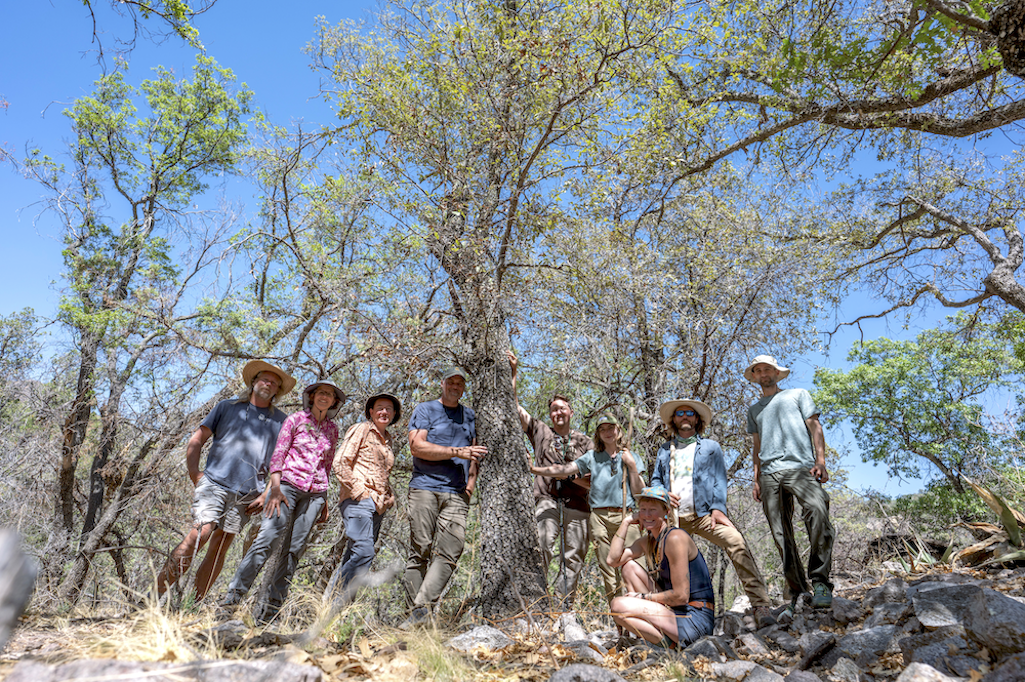
A rare oak, thought to be the last of its species, has been found in the backcountry of Big Bend National Park/U.S. Botanic Garden
There stands in the dry and rugged canyon in the backcountry of Big Bend National Park in West Texas a worn and diseased oak tree from a species once thought to be extinct but which now offers hope that it can help revive the species last spotted more than a decade ago.
The lone known specimen of Q. tardifolia, sometimes wrongly referred to the Chisos Mountains oak or the lateleaf oak -- "It's so rare, it doesn't even have a common name," said Devon Dotson of the U.S. Botanic Garden -- has been scarred by fire and weakened by a fungal infection, say botantists who spotted it back in May but held off on announcing the find until now. Since the discovery, researchers have been working with park staff to protect the 30-foot-tall tree from wildfire while conservationists search for acorns that might be used to propagate the species.
It was 2011 when what was thought to be the last Q. tardifolia was spotted alive. But there remained hope that with enough searching another tree might be found. Driven by that hope was an international coalition of botantical groups and associations, including The Morton Arboretum, that works for the conservation of oak species world-wide. A small group, supported by mules to carry their food and gear, entered the park in May and headed for the approximate area where that last oak was seen and spent three days scrambling over rough terrain in their search.
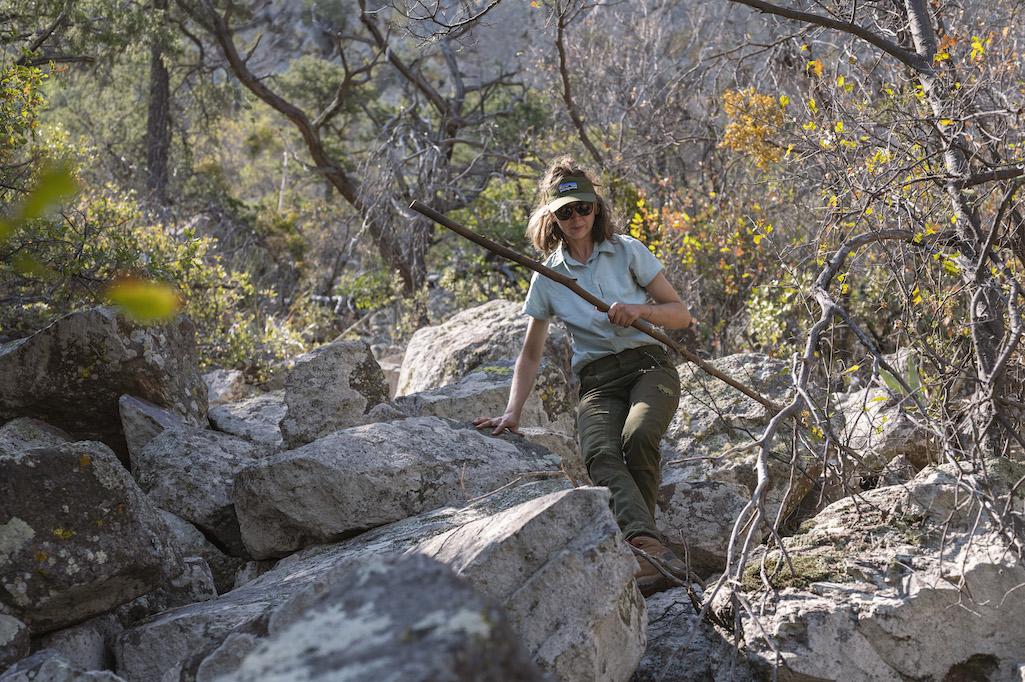
The search required clambering over rugged territory at times/U.S. Botanic Garden
"That's the only spot [Big Bend's Chisos Mountains] it's ever been found," Dotson, a spokesperson for the Botanic Garden, said during a phone call Friday. "All the way back to the 1930s, when it was very first described as a distinct species, that's where it was found, in the Chisos Mountains. The only place it's ever been seen in its entire existence was there in the Chisos Mountains, and so we knew that if it was going to be found, the highest likelihood would be right there in those very same mountains."
While Big Bend spans more than 800,000 acres, seemingly making a search for a tree thought extinct excrutiatingly difficult, Dotson said the group focused on the general area of the Chisos Mountains where the last living Q.tardifolia was spotted. Dictating the search were parameters such as the geography, soil conditions, and even elevation where that 2011 tree was seen, he said.
"Understanding that variety helps give us some ideas about what types of spaces in the park could be searched," he said. "And honestly, some of this is sort of a guessing game of, 'Based on that, let's extrapolate a little bit, and look for similar areas elsewhere."
The average person might not have spotted the tree, as it is surrounded by other species of oak.
"This one is quite unique. It's got that sort of shiny, hairy pubescence on the underside, which I think either none or very few other oaks in that area have," said Dotson. "It's quite a very different visual when you see it, if you know what you're looking for.
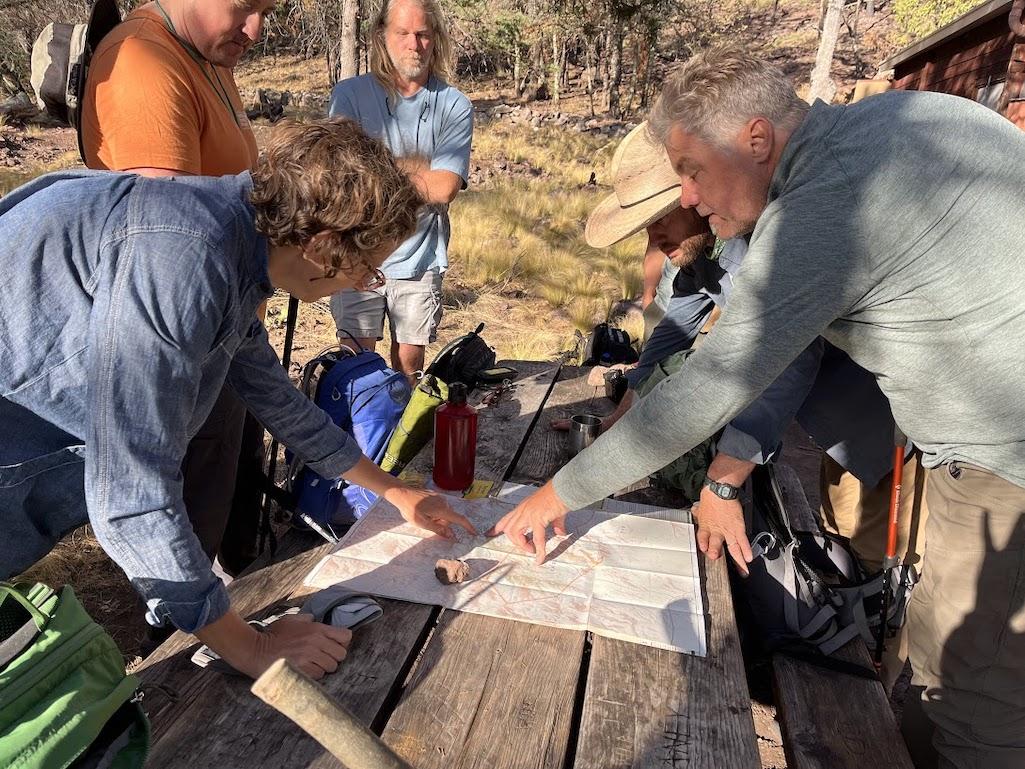
Mapping their progress/Polly Hill Arboretum
In a press release announcing the find, Murphy Westwood, vice president of science and conservation at The Morton Arboretum that led the tree-finding survey, said the oak could hold answers to its near encounter with extinction.
“This work is crucial to preserve the biodiversity that Earth is so quickly losing,” said Westwood. “If we ignore the decline of Q. tardifolia and other rare, endangered trees, we could see countless domino effects with the loss of other living entities in the ecosystems supported by those trees."
Dotson expanded on her comments, pointing out that "Texas is an interesting location for plants, right, because it's dealing a lot with extremes, a lot of temperature swings all over the map, a lot of drought and an inundation in certain places. There's some interesting stuff happening in the plant world that if there are unique genes found in plants in Texas, they might pose some possible adaptations that could be useful."
"Texas is kind of an interesting hotspot when looking for plant diversity," he continued. "And so this was one of, you know, a number of oaks that was part of this [Global Conservation Consortium for Oak] work. We knew that there was a possibility of going out and looking for it, and some other oaks and other plants at same time. And so this was part of it. And we've been looking for it as part of this work for two years, or over two years now."
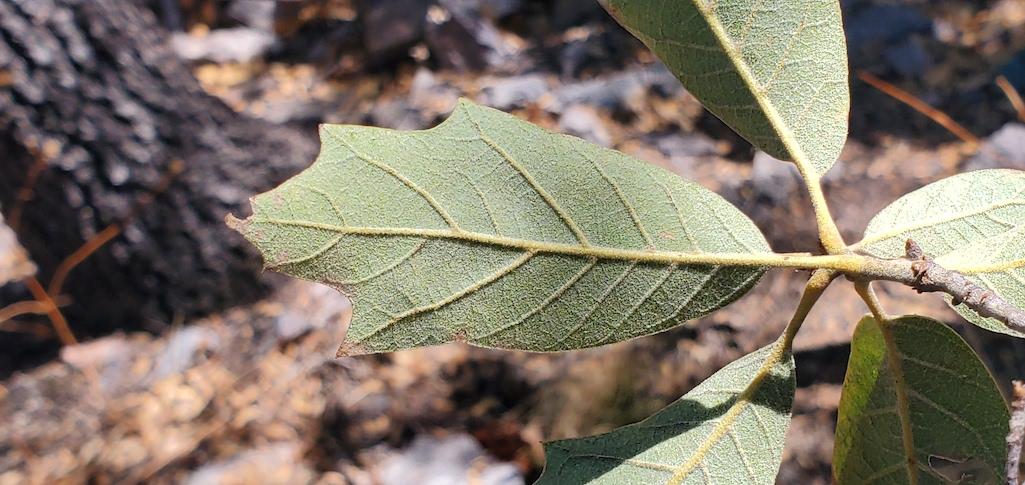
Distinctive back of leaf/Bartlett Tree Research Laboratories and Arboretum
This tree species, according to Westwood, is considered one of, if not the, rarest oak in the world.
“This is important, collaborative research necessary for the conservation of Q. tardifolia,” Carolyn Whiting, a botanist at the national park, said in the news release. “The Chisos Mountains support a high diversity of oak species, partly because of the wide range of habitats available in this ‘sky island.’ There is still much to learn about the oaks in the Chisos.”
Among the studies expected to be conducted is a molecular analysis of the tree to determine whether its DNA matches that of previous samples of Q. tardifolia.
According to Andrew Hipp, Ph.D., senior scientist in plant systematics and herbarium director at The Morton Arboretum, whose team will be conducting the genetic analysis, “This is an interesting problem. We’re looking into whether this tree is genetically similar to other trees that have been previously collected as Q. tardifolia. That should tell us whether this collection is the same as what Cornelius H. Muller named Q. tardifolia. It should also tell us whether this collection of specimens is genetically distinct enough from other closely related oaks in the area to warrant recognition as a species.”
The press release pointed out that "[O]aks are exceptional among tree species in that their acorns cannot be traditionally seed banked for conservation purposes. According to the researchers, they must be preserved in the wild or in living collections, which is why the involvement of botanical gardens is critical."
The researchers who found the Q. tardifolia tree are concerned that it is not producing acorns. Dotson said a team was planning to return to the area later this year to search again for acorns, but he added that "[A]corns are not a perfect way to continue forward with this species because we know that there's no other trees of the same species right around it, which means it's probably going to be some form of a hybrid acorn that's gotten pollen from a different species around it of oak. Oaks do that very readily, actually, they sort of self-hybridize between species. It can be really adaptive, and advantageous in an environment."
Another way to continue the species would be to graft a cutting from the oak to another tree.
"While we are also going to try to see if we can find some other trees now that we have found the one, we are going to use what we found from this the first location and the growth environment to sort of add some additional possibilities of doing some more searches to see could we find another one, because that really would be great if we could find a second tree," he said.
Wesley Knapp, chief botanist at NatureServe, who participated in the expedition, said that "[I]n many ways, this tree is an ancient relic. Due to the changing climate, the world is completely different now than when it evolved. It is incumbent upon us to learn from it and protect it while we still can in order to inform future conservation efforts. Nature rarely hands us a second chance, and I doubt we’ll get a third. We won’t waste it.”
Traveler footnote: Members of the May 2022 expedition that first located the lone Q. tardifolia tree included Adam Black of Bartlett Tree Research Laboratories and Arboretum, Michael Eason of San Antonio Botanical Garden, Emily Griswold of UC Davis Arboretum and Public Garden, Wesley Knapp of NatureServe, John Saltiel of USBG, Phillip Schulze of Lady Bird Johnson Wildflower Center, Elizabeth Thomas of Polly Hill Arboretum, Kelsey Wogan of Sul Ross State University A. Michael Powell Herbarium and Zarah Wyly, an independent oak researcher in California.
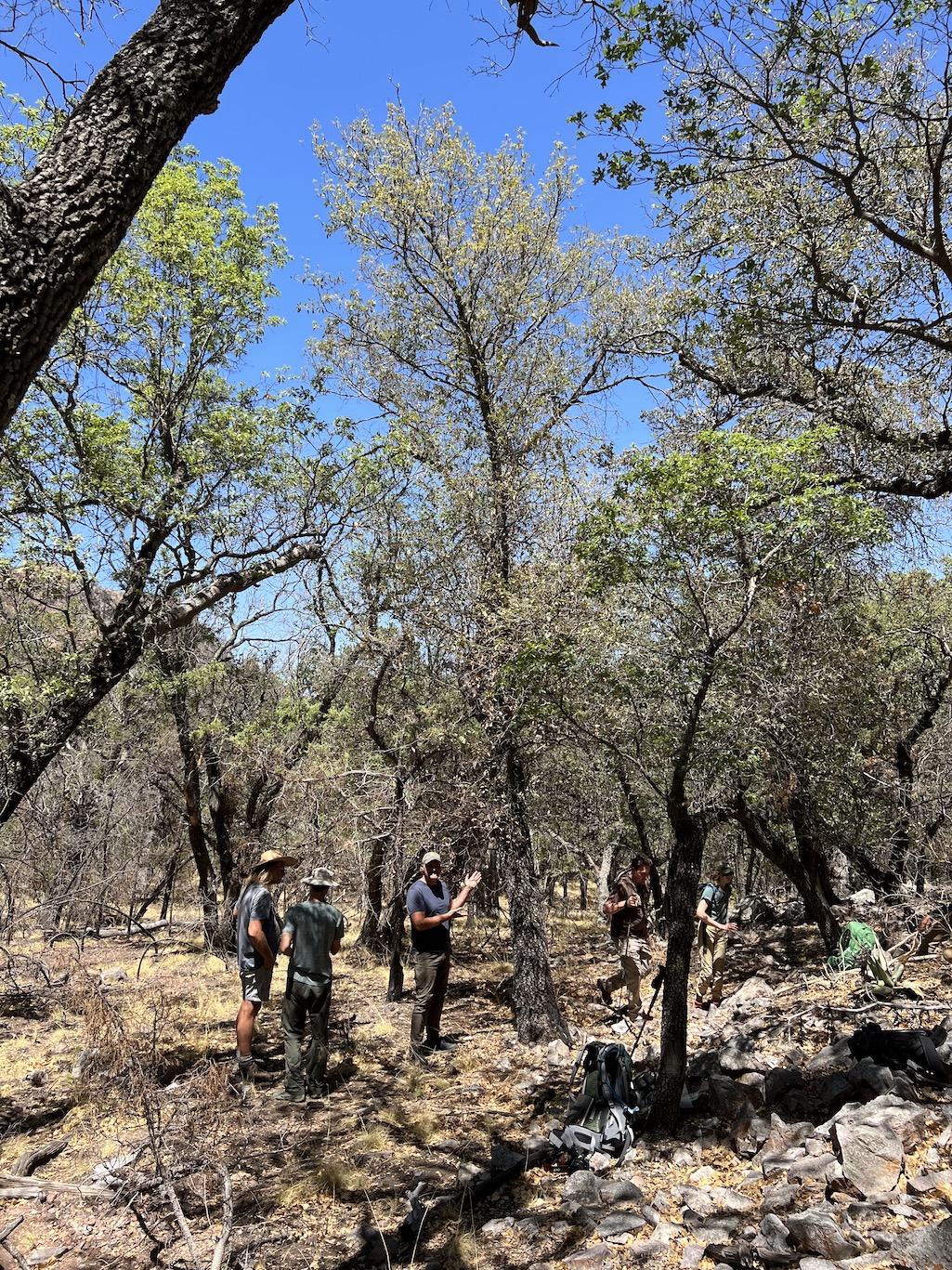
Quercus tardifolia found by researchers/UC Davis Arboretum and Public Garden.jpeg



Add comment